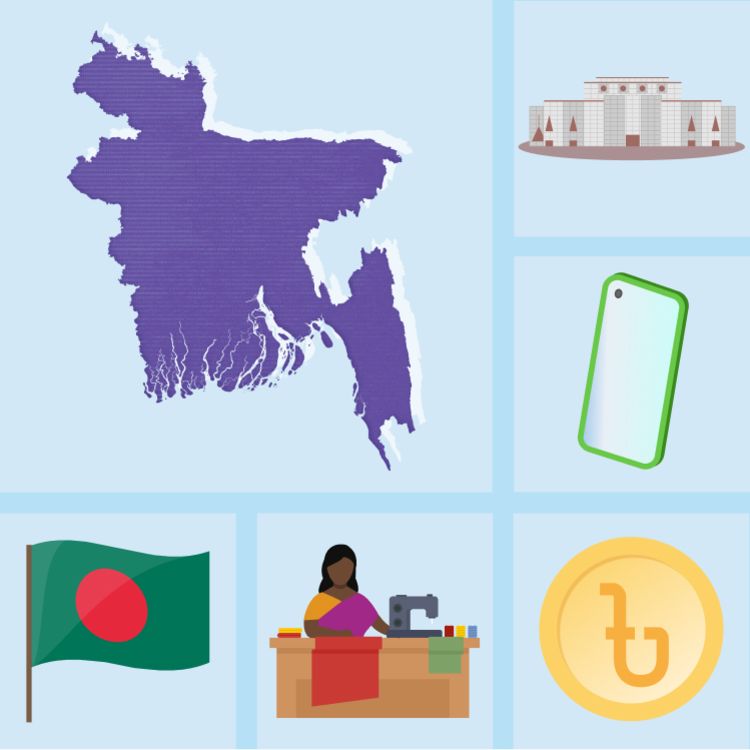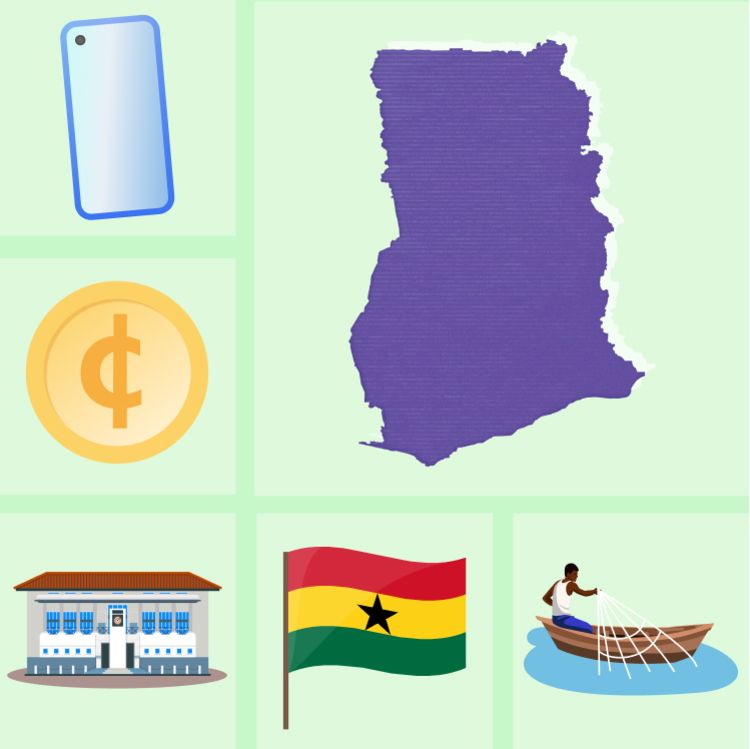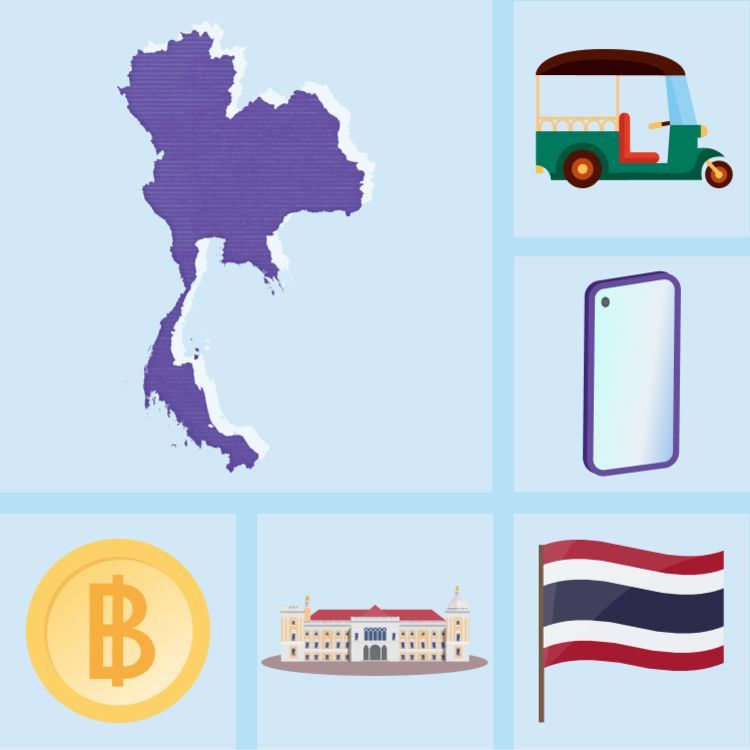Covid-19, Digitization, and Government-to-People Payments
The Future of Digital Financial Inclusion

Over the past two decades, the evolution of the internet, the expansion of affordable cellular and smartphone devices, and new software applications have helped digitize the financial services industry.
Today, many people receive wages, save money, and send remittances using digital tools. With consumers and retailers switching to cashless transactions, there has been a shift in buying behavior that has spread digital payments in the retail sector.
Governments have also embraced digitization to perform their functions, from collecting taxes to distributing welfare checks.
More recently, the Covid-19 pandemic catalyzed digitization across the globe.
With the introduction of lockdowns and social distancing norms, digital payments became more convenient, cheaper, and safer. At the same time, the pandemic exposed a widening digital divide, particularly in developing countries.
Digital payments have become critical during the pandemic, and they are here to stay.

What are digital payments?
What is G2P?
The Better Than Cash Alliance defines digital payments (also known as electronic payments) as a transfer of monetary value between two accounts using electronic devices. These devices can include conventional mobile phones, smartphones, internet-enabled computers, smartwatches, point-of-sale (POS) terminals, and any other digital communication channel that uses mobile wireless data.
All payment accounts can be broadly classified under one of three categories: business, government, or people. Depending on the which two of these three categories are involved at either end of a transaction, digital payments can be classified into one of the following nine categories:
Of these categories, digitizing G2P payments in particular can lead to an increase in economic efficiency and positively impact underserved populations. Deployment of digital solutions, including digital public infrastructure, can be the bridge that helps formalize economies, contributes to the economic empowerment of vulnerable groups, and enhances overall digital financial inclusion. Digital solutions can also provide security and authenticate financial transactions while empowering vulnerable populations, including women.
To understand the barriers to enabling inclusive financial access for women around the world, and the various opportunities that the U.S. government has to overcome such hurdles, listen to the podcast: Building the Future – Gender Equity and Global Financial Inclusion.
G2P payments (often known as transfer payments) can take several forms and be processed though different channels, including
- public sector wages,
- unemployment payments,
- tax credits and refunds,
- welfare subsidies,
- humanitarian assistance, and
- other forms of social assistance such as education, food, and healthcare transfers.
There are a range of formats through which these channels for G2P reach people:
A G2P system requires basic building blocks to function as a strong digital infrastructure.
This includes electricity and cybersecurity, a reliable and functional digital ID system, a payment infrastructure with interoperable systems, and a conducive regulatory environment.
Elements of a Good G2P Digital
Payment System
Created by CSIS with data from the World Bank.
Created by CSIS with data from the World Bank.
At the same time, to better reach recipients and the vulnerable population, governments need to have up-to-date social registries and allow payment delivery points that increase consumer choice.
Issues such as access to information on programs, fees for services, trust and value in the digital ecosystem, consumer protection, and digital and financial literacy also play out in the success of G2P payments.

How can governments improve digital payment systems for citizens?
In this video, Anit Mukherjee from the Center for Global Development and Loretta Michaels, advisor to the Center for Financial Inclusion, explain the context behind the massive surge in the use of government-to-people digital payments, what this means for the existing financial system, and how these changes are empowering people, especially women, in developing countries around the world.
How can governments improve digital payment systems for citizens?
In this video, Anit Mukherjee from the Center for Global Development and Loretta Michaels, advisor to the Center for Financial Inclusion, explain the context behind the massive surge in the use of government-to-people digital payments, what this means for the existing financial system, and how these changes are empowering people, especially women, in developing countries around the world.
While digitizing G2P payments has led to an increase in the overall number of bank account holders, researchers find that in most cases beneficiaries use the accounts to withdraw funds deposited and then continue cash-based transactions. This leaves the bank account barren until the next lump-sum payment is received from the government.
Other financial products such as credit, insurance, and savings remain underutilized.
This lack of engagement with financial institutions can be attributed to several factors, such as mistrust of the institution, poor infrastructure, and financial illiteracy, which dampen financial inclusion efforts.
How can digital payments enhance financial inclusion globally?
In this video, Justin Archer from Women’s World Banking explains why digital payments have the potential to increase earning potential, women’s economic empowerment, and digital inclusion, and what barriers still need to be addressed.
How can digital payments enhance financial inclusion globally?
In this video, Justin Archer from Women’s World Banking explains why digital payments have the potential to increase earning potential, women’s economic empowerment, and digital inclusion, and what barriers still need to be addressed.
Given the sheer volume of G2P payments made and the link established between the user and the bank, addressing some of these constraints can accelerate financial inclusion.
How has the Covid-19 pandemic disrupted the global payments landscape and financial inclusion?
When the Covid-19 pandemic broke out in March 2020 and lockdowns were announced, countries that already had a system of digital G2P payments were able to help vulnerable populations faster through contactless payments.
Countries like Bangladesh, India, and South Africa had already created an enabling environment necessary for them to transition into an all-digital G2P ecosystem easily. Other countries like Namibia have used e-wallets strategically, with more than 98 percent of all transfer payments taking place on this platform.
The countries below are worth examining as case studies for the impact of digital payments during crises.
BANGLADESH
Prior to the pandemic, Bangladesh boasted a sophisticated digital financial service network, especially regarding its mobile money platform landscape. Millions of digital financial transfers and transactions have occurred, eliminating barriers such as physical distance.
Near the beginning of the pandemic, over 300,000 mobile financial services (MFS) accounts were opened in Bangladesh. In 2020, digital payments boosted person-to-person transactions by 60 percent from April to September after a drastic decrease from December 2019 to April 2020. In addition, digital payments are reaching those who in the past had limited digital access.
The promotion of digital payments has contributed to decreasing the country’s considerable gender gap, with women opening over 60 percent of accounts between March and August 2020. One study found that 50 percent of users could not complete a transaction without support from an agent.
bKash, a Bangladesh-based digital payments service provider, is partially responsible for the rapid changes in how the financial sector is engaging with Bangladeshi society. To learn more about bKash and whether other developing countries can replicate Bangladesh's success, listen to the podcast below: Building the Future - The Story of Digital Payments in Bangladesh.
As a result of the growing use of mobile financial services, the e-commerce sector has grown significantly during the pandemic; the Asian Development Bank estimates that the Bangladeshi e-commerce market will triple in size by 2023.
GHANA
In Ghana, a digital financial services policy (DFS) was launched to address the impacts of the Covid-19 pandemic. DFS includes policies to ease the access and use of digital payments, such as reduced and removed fees for low-value transactions (e.g., remittances), and relaxed transaction and wallet limits for mobile money.
Beneficiaries of Ghana’s largest social benefit program (LEAP) will also receive payments via mobile money. Consultations between providers and the central bank leading up to these initiatives will seek to preserve the long-term viability of digital finance in Ghana.
With the restriction on movement during the pandemic, digital transactions increased by 120 percent between February 2020 and February 2022, and mobile money is currently the fastest growing method for electronic payments in the country.
The government aims to use DFS to support women’s economic empowerment by utilizing gender-disaggregated data and indicators and focusing on promoting digital payments in women-owned businesses.
THAILAND
In 2021, Thailand established a $7 billion cash handout program to assist its low-income populations (e.g., agriculture and informal workers) during the pandemic.
Approximately 45 percent of the population was aided by digital public services such as cash transfers and welfare services. Cash handout transfers were distributed on a weekly basis through the government’s mobile money platform. The funds provided can be used for public transport, basic needs, and purchases in over one million selected shops.
These funds can also be used with the new national e-payment scheme PromptPay, a tool that allows the use of a mobile phone or citizen ID number to exchange money between consumers and businesses. PromptPay increased more than 100 percent in average daily transactions from August 2020 to August 2021, making it one of the fastest growing services that delivers real-time payments in the world.
As more businesses transition toward online payment services, cashless payments are used in shopping malls, restaurants, and even street carts.
Estimates predict that digital payment users in Thailand could increase from 33.83 million users in 2020 to 41.43 million users in 2024.
TOGO
In Togo, the Novissi program, implemented in 2020, is a new cashless transfer program. The program looks to ameliorate the impacts of Covid-19 on informal economy workers such as moto taxi drivers. Cash is discouraged, and transfers are predominately made through mobile money and digital payments.
In 2021, 12 percent of adults in Togo used digital payments to pay utility bills, up 50 percent from 2017. In addition, the Novissi program prioritized the inclusion of women in its marketing. Effective social media and advertisement strategies attracted twice as many women as men to the digital payment scheme. As of January 2021, Novissi had generated 170,278 new mobile money accounts.
Using geospatial data and machine-learning algorithms, the 100 poorest rural cantons were prioritized as primary beneficiaries of Novossi.
After the government partnered with GiveDirectly and academic researchers, targeting methods were refined and expanded to allow the inclusion of vulnerable people living in the 200 poorest cantons in Togo.
Covid-19 lockdowns prompted many governments to realize the benefits of digitization.
From March to December 2020, 166 governments launched 429 cash transfer programs.
This expanded the number of global G2P payment recipients by 1.1 billion people (14 percent of the world’s population). Today, the IMF estimates that more than 1.8 billion receive social assistance from governments.
Governments have used a broad range of tools to help facilitate non-cash payments to support their population. These include the use of digital vouchers, e-wallets, and even tiered know-your-customer (KYC) practices to help previously unbanked populations open their first bank or mobile money account remotely despite the pandemic restrictions.
The silver lining about the Covid-19 pandemic is its impact on digital payments and financial inclusion. Digitization and technological tools have allowed the financial industry to evolve and reach more people. As a result of digitization, more people are engaged in the financial system.
In low- and middle-income countries, financial account ownership increased, and comprehensive digital payment systems were adopted.
Collecting data from over 123 economies during the Covid-19 pandemic, the 2021 Global Findex Database reports that from 2011 to 2017, the world experienced a steep increase in financial account ownership. This trend has continued through Covid-19, with 76 percent of the global adult population now owning a financial account. Following this trend, the number of unbanked adults decreased from 1.7 billion in 2017 to 1.4 billion in 2021.
Overall financial inclusion has improved, but barriers to account ownership remain for the 1.4 billion unbanked adults, including lack of funds, high cost of financial services, lack of education and resources, and physical distance to financial services.
Prior to the pandemic, the gender gap in financial account ownership in developing countries remained static at 9 percent. The gender gap has decreased to 6 percent, with 74 percent of men and 68 percent of women holding accounts.
Not only do women benefit from being brought into the formal financial system, women also drive economic growth. To learn more about the importance of empowering women to engage in digital financial services and the economy, listen to the podcast: Building the Future - There's Nothing Micro about a Billion Women with Mary Ellen Iskenderian.
On the digital payments front, the Global Findex Database shows that in 2021, the number of adults in developing countries making or receiving digital payments was 57 percent, growing from 35 percent in 2017.
Additionally, over one-third of adults in developing countries made a utility payment for the very first time directly from an account. In sub-Saharan Africa, mobile money account ownership experienced a significant hike, while financial account ownership decreased in the region. At the same time, missing or lacking digital ID and consumer protection systems prevent continued growth in mobile money account ownership.
Digital payments accelerated economic development during Covid-19. To learn more about how an inclusive and robust digital infrastructure is interlinked with the resiliency and development of modern economies throughout Africa, listen to the podcast: Building the Future - Africa’s Response to Covid-19: The Acceleration of Its Digital Revolution.
Additionally, at the start of the pandemic, alarm bells were rung over the potential crushing effect Covid-19 would cast on remittance payments. In an April 2020 statement, the World Bank expressed its concern that remittance flows to low- and middle-income countries could drop by up to 20 percent ($109 billion). However, in reality, remittance flows dipped only marginally in 2020—less than 2 percent (hitting $540 billion compared to $548 billion in 2019)—and grew in 2021 ($589 billion).
Digital payments have remained an integral component to sustaining the global inflow of remittances into low- and middle-income countries. These transactions are essential, as remittances remain one of the dominant sources to keep more impoverished communities afloat.
Risks and Values Embedded in Digital Systems
As digital transformation continues to accelerate worldwide, there are also certain principles and values embedded into these digital systems that need to be considered as well as potential risks that need to be managed.
How to make digital payment systems more equitable and secure
In this video, Kathleen McGowan from the Digital Impact Alliance discusses the importance of safeguarding open and transparent payment systems and how development finance institutions can do more to promote digital financial inclusion and confidence.
How to make digital payment systems more equitable and secure
In this video, Kathleen McGowan from the Digital Impact Alliance discusses the importance of safeguarding open and transparent payment systems and how development finance institutions can do more to promote digital financial inclusion and confidence.
One area of concern is cybersecurity and financial integrity. The digital revolution has made it easier for rogue actors to misuse the system and risk the stability and security of the financial system.
A second area of concern in the risk to individuals’ privacy and their freedoms. Digitization of payments means that vast data repositories are created to store sensitive and private information of users. State institutions like central banks and financial regulators will also collect personal information to perform customer due diligence checks and preserve financial integrity.
Absent laws that safeguard privacy and govern data use, this data is vulnerable for misuse, especially in countries with weak democratic values, resulting in the spread of digital authoritarianism.
And rather than foster an inclusive society, digital technologies will end up excluding ethnic minorities or other vulnerable population groups.
Finally, there is a growing concern that without intentional policy and technology design choices, the digitization of financial services will remain exclusive.
On their own, technologies cannot understand or eliminate barriers to access and usage. Predictive technologies like artificial intelligence and machine learning are not designed to adjust for cultural nuances.
Without human intervention in the design of the digital payments’ architecture, technologies can end up reinforcing social biases and exacerbating inequality and the digital divide.
There are ample opportunities to continue promoting widespread access, safety, and resilience for digital payments.
Additional considerations such as cybersecurity, confidence in financial services and products, and increasing digital literacy among users must be addressed by governments and the private sector as they work toward making their countries more digitally inclusive.
These aspects of digital payments will be pivotal for maintaining an inclusive, stable, and safe digital financial ecosystem.
Digital payments are transforming the world.
Investing now to make sure that change is a positive one is a price well worth paying.
This report was made possible by the generous support of the Bill and Melinda Gates Foundation.

WRITTEN BY
STORY PRODUCTION
- Visuals and production by Sarah Grace, iDeas Lab.
- Development and design assistance by Christina Hamm.
- Data visualizations produced by Lindsay Urchyk, Rachelle Spicer and José Romero, with design assistance by Leena Marte, Lauren Bailey, William Taylor, and Sarah Grace, iDeas Lab.
- Video production by Sarah Grace, Michael Kohler, and Mark Donaldson, iDeas Lab.
- Illustrations adapted from Adobe Stock.








